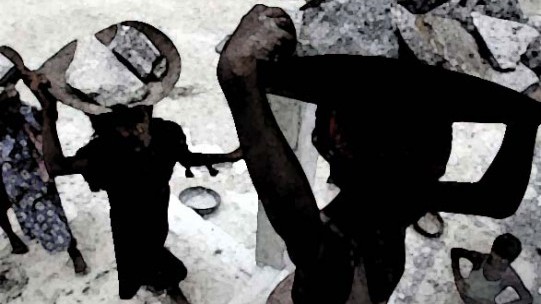
LAHORE:
Of the 2.6 million children between the ages of five and 16 years in Lahore, more than one million (around 38 per cent) are out of school. The government will need to set up 38 new schools in the district over the next five years if it wants to enroll them.
These facts were shared on Tuesday by the Institute of Social and Policy Sciences (ISAPS) at an All Parties Conference (APC) on the issues related to the education sector. ISAPA had arranged the APC in collaboration with Alif Ailaan.
According to ISAPS, the out-of-school children constitute 38 per cent of the total children in Lahore who are between 5 and 16 years of age.
It said currently the district had 1,216 schools for both boys and girls and the government needed to establish another 38 schools by 2018 to enroll the children.
It said there were 10,408 classrooms in 1,216 schools; more than 3,700 new rooms would be required over the next five years.
Of the 13,547 teachers in the district, 15 per cent are primary level teachers, 18 per cent are middle level and 67 per cent are secondary level teachers.
ISAPS suggested the number should increase to 19,350 by 2018 to cater to the children to be enrolled by then.
Ahmad Ali, a research fellow at ISAPS, said ensuring access to education, providing missing facilities at schools and enrolling more students were some of the areas the government should focus on.
Praising the Punjab government for enrolling 3.5 million children during the last year, he said what remained to be gauged was how the government planned to retain them. “The role of private sector in the wake of the promulgation of the Free and Compulsory Education Ordinance 2014 needs to be reconsidered.”
Ali said that with the promulgation of the ordinance, which had been recently tabled in the Punjab Assembly, it was essential to ensure that rules of business of the legislation were established.
He said 1.5 per cent of the schools in the district did not have boundary walls, 2.2 per cent were devoid of electricity, 0.3 per cent had no access to potable water and 0.4 per cent were without toilets.
Ali said the government needed to establish priorities in order to address these issues. He recommended that girls’ schools be given priority for addressing the issues.
Citing some cases where the student-teacher ratio fluctuated from 9:1 to 200:1, he said there was a need to effectively implement the teachers’ rationalisation policy. Currently the government is working on a 40:1 student-teacher ratio.
The Jamaat-i-Islami’s Zikrullah Mujahid said the debate on curriculum and language was integral to the education sector. He said primary education was largely neglected by the government.
PPP’s Khurram Wattoo favoured promoting a uniform curriculum. He stressed the need for awarding more scholarships to the deserving students. “The private sector [schools] is largely being run by people with political affiliations. This aspect needs to be explored and its impacts determined,” said Irtiza Kazmi of the MQM. PTI’s Atifuddin said the syllabus needed to be redrawn. “We should redesign and reform our curriculum in line with our social, cultural and economic needs.”
Published in The Express Tribune, May 21st, 2014.
COMMENTS (1)
Comments are moderated and generally will be posted if they are on-topic and not abusive.
For more information, please see our Comments FAQ




























































Our NGO conducted a survry, the ratio is over 60% in KPK! PARHA LIKHA KPK.